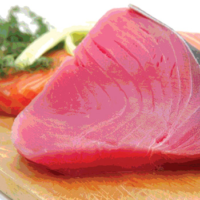Color Additives: FDA's Regulatory Process and Historical Perspectives

A color additive, as defined by regulation, is any dye, pigment, or other substance that can impart color to a food, drug, or cosmetic or to the human body. Color additives are important components of many products, making them attractive, appealing, appetizing, and informative. Added color serves as a kind of code that allows us to identify products on sight, like candy flavors, medicine dosages, and left or right contact lenses. One of the U.S. Food and Drug Administration's (FDA) roles is to assure that color additives are safely and appropriately used.
Color additives are classified as straight colors, lakes, and mixtures. Straight colors are color additives that have not been mixed or chemically reacted with any other substance (for example, FD&C Blue No. 1 or Blue 1). Lakes are formed by chemically reacting straight colors with precipitants and substrata (for example, Blue 1 Lake). Lakes for food use must be made from certified batches of straight colors. (One exception is carmine, which is a lake made from cochineal extract.) Lakes for food use are made with aluminum cation as the precipitant and aluminum hydroxide as the substratum. Mixtures are color additives formed by mixing one color additive with one or more other color additives or non-colored diluents, without a chemical reaction (for example, food inks used to mark confectionery).
"Color" includes white, black, and gray. In addition, any chemical that reacts with another substance and causes formation of a color may be a color additive. For example, dihydroxyacetone (DHA), when applied to the skin, reacts with the protein of the skin to impart color. Even though DHA is colorless, it acts as a color additive when used for this purpose and is regulated as a color additive.
There is no "generally recognized as safe" (GRAS) exemption to the definition of a color additive. The Federal Food, Drug, and Cosmetic Act (FD&C Act) provides that a substance that imparts color is a color additive and is subject to premarket approval requirements unless the substance is used solely for a purpose other than coloring.
Historical Perspectives: The Basis for Current Regulations
Naturally occurring color additives from vegetable and mineral sources were used to color foods, drugs, and cosmetics in ancient times. Paprika, turmeric, saffron, iron and lead oxides, and copper sulfate are some examples. The early Egyptians used artificial colors in cosmetics and hair dyes. Wine was artificially colored beginning in at least 300 BC.
In 1856, William Henry Perkin discovered the first synthetic organic dye, called mauve. Discoveries of similar dyes soon followed and they quickly became used to color foods, drugs, and cosmetics. Because these dyes were first produced from by-products of coal processing, they were known as "coal-tar colors."
Federal oversight of color additives began in the 1880s. The assessment of color-imparting ingredients in foods was among the first public initiatives undertaken by the U.S. when, in 1881, the U.S. Department of Agriculture's (USDA) Bureau of Chemistry began research on the use of colors in food. Butter and cheese were the first foods for which the federal government authorized the use of artificial coloring.
By 1900, many foods, drugs and cosmetics available in the U.S. were artificially colored. However, not all of the coloring agents were harmless and some were being used to hide inferior or defective foods. A careful assessment of the chemicals used for coloring foods at the time found many blatantly poisonous materials such as lead, arsenic, and mercury being added. In many cases, the toxicities of the starting materials for synthesizing coloring agents were well known and could be toxins, irritants, sensitizers, or carcinogens.
Food and Drugs Act. In 1906, Congress passed the Food and Drugs Act, which prohibited the use of poisonous or deleterious colors in confectionery and the coloring or staining of food to conceal damage or inferiority. The USDA had initial enforcement authority for this act. In 1907, the USDA issued Food Inspection Decision (F.I.D.) 76, which contained a list of seven straight colors approved for use in food. Subsequent F.I.D's in the early part of the century established a voluntary certification program and listed new colors.
In 1927, responsibility for enforcing the Food and Drugs Act of 1906 was given to the newly established FDA. (The agency was first called the Food, Drug, and Insecticide Administration and was given its current name in 1930.) By 1931, there were 15 straight colors approved for use in food, including six of the seven in use today: FD&C Blue No. 1 (Brilliant Blue FCF), FD&C Blue No. 2 (Indigotine), FD&C Green No. 3 (Fast Green FCF), FD&C Red No. 3 (Erythrosine), FD&C Yellow No. 5 (Tartrazine), and FD&C Yellow No. 6 (Sunset Yellow).
Federal Food, Drug, and Cosmetic Act of 1938. In the 1920s and 1930s, it became clear that the Food and Drugs Act of 1906 did not go far enough to protect the public health from misbranded, adulterated, and even toxic products, including an eyelash dye that blinded some women. The Federal Food, Drug, and Cosmetic Act of 1938 further increased government oversight of food and drugs and, for the first time, passed legislation for the regulation of cosmetics and medical devices.
For color additives, the 1938 FD&C Act mandated the listing of those coal-tar colors (other than coal-tar hair dyes) that were "harmless and suitable" for use in foods, drugs, and cosmetics. In addition, the act: contained adulteration and misbranding provisions for the use of coal-tar colors in foods, drugs, and cosmetics; required the listing of new colors; and made mandatory the previously voluntary certification program for batches of listed colors, with associated fees. Color additive lakes were in use by this time and were included in the provisions of the 1938 FD&C Act. The initial listing of lakes for food use under the act restricted their use to coloring shell eggs (egg dyeing).
In response to the 1938 Act, through public hearings FDA created the FD&C, D&C, and Ext. D&C nomenclature for certifiable color additives. FDA also established labeling and recordkeeping provisions, identified diluents that could be added to color additives, and established procedures for requesting certification of color additives and adding new color additives to the permitted list.
Color Additive Amendments of 1960. In the fall of 1950, many children became ill from eating an orange Halloween candy containing 1-2% FD&C Orange No. 1, a color additive approved for use in food. That same year, U.S. House Representative James Delaney began holding hearings on the possible carcinogenicity of pesticide residues and food additives. These events prompted FDA to reevaluate all of the listed color additives. In the next few years, FDA found that several caused serious adverse effects and proceeded to terminate their listings. During that time, it also became clear that coal was no longer the primary raw material source for the manufacture of color additives.
The Color Additive Amendments of 1960 defined "color additive" and required that only color additives (except coal-tar hair dyes) listed as "suitable and safe" for a given use could be used in foods, drugs, cosmetics, and medical devices. The 1960 amendments prescribed the factors that FDA must consider in determining whether a proposed use of a color additive is safe, as well as the specific conditions for safe use that must be included in the listing regulation. FDA updated the procedural regulations for the petition process in response to these amendments. Under these amendments, the approximately 200 color additives that were in commercial use at the time were provisionally listed and could be used on an interim basis until they were either permanently listed or terminated due to safety concerns or lack of commercial interest. Permanently listing a color additive for a proposed use was prohibited unless scientific data established its safety.
The 1960 Amendments also contained a "Delaney Clause" that prohibited the listing of a color additive shown to be a carcinogen. The clause states that "A color additive shall be deemed unsafe. . . if the additive is found. . . to induce cancer when ingested by man or animal, or . . . after other relevant exposure of man or animal to such additive."
After 1960, FDA gradually removed color additives from the provisional list either by permanent listing or by termination of listing. Today about half of the "1960" color additives remain listed; only color additive lakes remain provisionally listed and initiatives are underway to permanently list them.
Regulation of Color Additives
FDA has regulatory oversight for color additives used in foods, drugs, cosmetics, and medical devices. FDA lists new color additives or new uses for listed color additives that have been shown to be safe for their intended uses in the Code of Federal Regulations (CFR), conducts a certification program for batches of color additives that are required to be certified before sale, and monitors the use of color additives in products in the U.S., including product labeling. These activities stem from FDA's role in enforcing the color additive provisions of the FD&C Act, the Fair Packaging and Labeling Act, and other applicable laws, including the recently enacted Public Health Security and Bioterrorism Preparedness and Response Act of 2002 that requires domestic and foreign manufacturers of color additives used as ingredients in foods to register with FDA by Dec. 12, 2003.
Color additives used in foods, drugs, cosmetics, and medical devices must comply with individual listing regulations issued by FDA. The use of an unlisted color additive, the improper use of a listed color additive, or the use of a color additive that does not conform to the purity and identity specifications of the listing regulation may cause a product to be adulterated according to the provisions of the FD&C Act. FDA may take enforcement action against such products. Most products contain only a small amount of color additive, so it takes only a small quantity to potentially adulterate a large amount of product.
FDA has established regulations for color additives in Title 21 of the CFR, parts 70-82. The regulations in 21 CFR parts 73, 74 and 82 identify each listed color additive, provide chemical specifications for the color additives, and identify uses and restrictions, labeling requirements and the requirement for certification. The regulations in 21 CFR part 71 describe the premarket approval process for new color additives or new uses for listed color additives. 21 CFR part 80 pertains to color additive certification.
Additional regulations that provide specific requirements for color additives in foods, drugs, cosmetics, and medical devices are found in other parts of the CFR. For example, the labeling of food products is found at 21 CFR 101.22(k) and cosmetic products at 21 CFR 701.3. Color additives are sometimes called "artificial color" or "artificial coloring" (21 CFR 101.22(a)(4)). From the regulatory standpoint, the term "colorant" refers to a dye or pigment used in a food contact material such as a polymer and doesn't migrate to food. These materials are regulated not as color additives but as food additives (21 CFR 178.3297(a)).
Listed Color Additives
All color additives required to be listed by FDA fall into two categories: those that are subject to FDA's certification process and those that are exempt from the certification process. Color additives subject to batch certification are synthetic organic dyes, lakes, or pigments. Those for food use are chemically classified as azo, xanthene, triphenylmethane, and indigoid dyes. Although certifiable color additives have been called coal-tar colors because of their traditional origins, today they are synthesized mainly from raw materials obtained from petroleum.
Color additives exempt from certification generally include those derived from plant or mineral sources. One, cochineal extract (and its lake, carmine) is derived from an insect. Most are straight colors; one exception is carmine as described above. Certification exempt color additives must comply with the identity and purity specifications and use limitations described in their listing regulations. Users of these color additives are responsible for ensuring that the color additives comply with the listing regulations.
 Straight colors subject to batch certification are listed in 21 CFR part 74 and lakes subject to batch certification are listed in 21 CFR part 82. Color additives exempt from certification are listed in 21 CFR part 73. Table 1 gives the complete list of straight colors permitted for use in foods. More information on listed color additives is given on FDA's website.
Straight colors subject to batch certification are listed in 21 CFR part 74 and lakes subject to batch certification are listed in 21 CFR part 82. Color additives exempt from certification are listed in 21 CFR part 73. Table 1 gives the complete list of straight colors permitted for use in foods. More information on listed color additives is given on FDA's website.
Color Additives and GRAS
The FD&C Act provides for an exemption of some substances from the definition of "food additive" if they are generally recognized as safe for their intended uses. Such an exemption does not apply to color additives. However, a substance that is listed as GRAS also may be listed as a color additive. An example is ferrous lactate (21 CFR 184.1311 and 21 CFR 73.165).
A mixture of carotenoid xanthophyll esters ("lutein esters") is the subject of a recent GRAS notice submitted to FDA in support of its use as a food ingredient. The compound is dark orange-brown and may be capable of imparting color to a food. FDA's response letter to the notice reminds the manufacturer that use of the substance as a color additive, in addition to use as a GRAS substance, would require premarket approval by FDA.
Color Additive Certification
Color additive certification is the process by which FDA assures that newly manufactured batches of color additives meet the identity and specification requirements of their listing regulations. During fiscal year 2002, FDA certified batches representing a total of 16.5 million pounds of color additives, much of it for food uses.
The decision about the need for batch certification is made during the agency's review of a petition requesting a listing for the color additive. Batch certification is required when the composition needs to be controlled to protect the public health. Some color additives may contain impurities of toxicological concern, such as carcinogenic constituents.
The requirements for color additive certification, as well as storage, fees, recordkeeping, and inspection for owners and manufacturers, are described in detail in 21 CFR part 80. Regulations in 21 CFR part 70.25 prescribe labeling requirements for color additive batches before and after certification. Under the certification process, a sample from each manufactured batch of a certifiable color additive must be sent to FDA's Color Certification Branch accompanied by a "Request for Certification" that provides information about the batch including the name of the color additive, the name of the manufacturer, the batch weight, storage conditions for the batch, and the use for which it is being certified. FDA charges a fee for certification based on the batch weight. Prior to certification, the batch cannot be used in food, drug, cosmetic, or medical device products and must be stored separately from batches already certified.
Upon receipt of the sample, FDA personnel evaluate its physical appearance and chemically analyze it. At least 10 analyses are performed, for purity (total color content), moisture, residual salts, unreacted intermediates, colored impurities other than the main color (called subsidiary colors), any other specified impurities, and the heavy metals lead, arsenic, and mercury. The evaluation and analyses typically take less than five working days. The results are reviewed for compliance with the identity and specifications described in the listing regulation for the color additive. If the sample is found to meet these requirements, FDA issues a certificate for the batch that identifies the color additive, the batch weight, the uses for which the color additive is certified, the name and address of the owner, and other information as required. FDA also assigns a unique lot number for the batch and the name of the batch changes. For example, a batch of "tartrazine" becomes "FD&C Yellow No. 5."
Analytical and informational components of the certification program have been automated to the fullest extent possible. Currently, an on-line web-based system allows color additive manufacturers to submit and access information about individual samples, including receipt of FDA's certificates. Owners of certified batches are subject to FDA inspections of their establishments. During these inspections, FDA examines records of use of the color additives and takes samples from certified batches for analysis for comparison with FDA's original results.
Petition Review Process
When evaluating the safety of a new color additive or a new use for a listed color additive, FDA considers such factors as probable consumption or exposure from its use, cumulative effect in the diet, evaluation by experts qualified by scientific training and experience, and the availability of analytical methods for determining its purity and acceptable levels of impurities.
Any interested person may petition FDA for the use of a new color additive or to amend the listing of a color additive for a new use. The petitioner for a new color additive must provide information on the following:
• Identity of the proposed color additive
• Physical, chemical, and biological properties
• Chemical specifications
• Manufacturing process description
• Stability data
• Intended uses and restrictions
• Labeling
• Tolerances and limitations
• Analytical methods for enforcing chemical specifications
• Analytical methods for determination of the color additive in products
• Identification and determination of any substance formed in or on products because of the use of the color additive
• Safety studies
• Estimate of probable exposure
• Proposed regulation
• Proposed exemption from batch certification
• An environmental assessment or claim for categorical exclusion
The petitioner must submit data demonstrating the safety and suitability of the new color additive or new use. FDA will then evaluate the data in the petition, public comments to the petition, and other relevant data in FDA's files.
Upon approval of the petition, FDA will issue a new listing regulation or alter an existing regulation for the new color additive or new use. The process for submitting petitions is described in detail in 21 CFR parts 70 and 71, which describe the format, the administrative requirements, and the information and data required. The data that are appropriate for support of a color additive petition will vary depending on whether the petition is for a new color additive or for a new use for a listed color additive, the level and type of use of the proposed color additive, and the amount of color additive and its impurities that may enter body tissues. The petition process also is described on the agency's website.
 Table 2 provides information on recently listed color additives and pending color additive petitions. Once a new color additive is listed, FDA continually monitors its safe use, assuring the consideration of new data and safety information. Historically, this activity has resulted in regulatory changes for color additives that were necessary to protect the public health.
Table 2 provides information on recently listed color additives and pending color additive petitions. Once a new color additive is listed, FDA continually monitors its safe use, assuring the consideration of new data and safety information. Historically, this activity has resulted in regulatory changes for color additives that were necessary to protect the public health.
Enforcement of Color Additive Regulations
When FDA investigation determines that a color additive violation has occurred, the agency can take a number of actions to enforce the FD&C Act and to protect the public health. In the absence of voluntary action (e.g., product recall) by the responsible firm to correct the problem, FDA has several advisory, administrative, and judicial options which include warning letters, detentions, issuance of import alerts, and seizures.
Some of FDA's color additive enforcement actions may be found at www.cfsan.fda.gov/~dms/col-enf.html. FDA has recently sent warning letters for undeclared FD&C Yellow No. 6 in dehydrated papaya, for undeclared FD&C Red No. 40 and FD&C Yellow No. 6 in bakery products, and for undeclared FD&C Blue No. 1 and FD&C Yellow No. 5 in noodle products. FDA also recently reported recalls for undeclared FD&C Red No. 40 and incorrectly declared FD&C Yellow No. 6 in bottled food color and for presence of the unapproved color additive Ponceau 4R in strawberry filling.
FDA frequently offers guidance on the appropriate use of color additives. One example of a long-standing policy since the early 1900s concerns the use of small, silver balls or "silver dragees" sold for decorating cookies, cakes, etc. As expressed in a Compliance Policy Guide (CPG), "When small silver balls known as 'silver dragees' are sold exclusively for decorating cakes and are used under conditions which preclude their consumption as confectionery, they are not considered to be in the category of a food or confectionery." For specifics, visit www.fda.gov/ora/compliance_ref/cpg/ cpgfod/cpg545-200.html.
In summary, the federal regulation of color additives has a long history and remains an important program for the FDA in assuring that consumers have safe and properly labeled products.
Julie N. Barrows, Ph.D.,is a consumer safety officer in the Office of Cosmetics and Colors, FDA CFSAN. She has worked at FDA since 1988, first in research on color additive certification and currently in the regulation of color additives and cosmetics.
Arthur L. Lipman, Ph.D.,is supervisory Consumer Safety Officer in CFSAN's Office of Food Additive Safety. Dr. Lipman has worked at FDA in the regulation of food ingredients, with a specialty in color additives, since 1977.
Catherine J. Bailey, M.Ed., is Acting Director of the Division of Science and Applied Technology in the Office of Cosmetics and Colors, FDA CFSAN. She joined FDA in 1975 as a chemist and performed laboratory investigations and petition coordination for color additives. She is Director of CFSAN's Executive Operations and is a member of the Food Safety Magazine Editorial Advisory Board.
Acknowledgment
The authors thank Ray Decker and Naomi Richfield-Fratz for their contributions to this article.
Looking for a reprint of this article?
From high-res PDFs to custom plaques, order your copy today!








